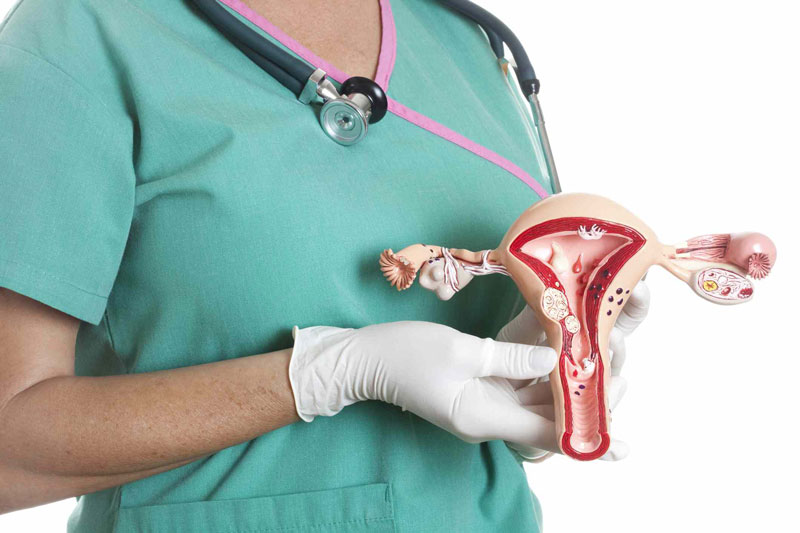Wertheim surgery is a radical hysterectomy procedure developed in the early 1900s for treating cervical cancer. You’ll undergo removal of your uterus, upper vagina, surrounding tissues, and nearby lymph nodes during a 3-5 hour operation. Modern techniques include minimally invasive options that preserve nerve function while maintaining effectiveness. Expect 3-5 days in hospital and 6-8 weeks recovery at home. This thorough guide will walk you through every step of your journey.
Key Takeaways
- Wertheim surgery is a radical hysterectomy procedure developed for cervical cancer treatment that removes the uterus, upper vagina, and nearby lymph nodes.
- Modern techniques include minimally invasive approaches (laparoscopic and robotic-assisted) that reduce recovery time while maintaining cancer removal effectiveness.
- Pre-surgery preparation involves imaging studies, blood tests, medication review, and patient education about the procedure risks and benefits.
- The procedure typically lasts 3-5 hours under general anesthesia and requires a 3-5 day hospital stay for monitoring.
- Recovery continues at home for 6-8 weeks with activity restrictions and scheduled follow-up appointments at 2 weeks, 6 weeks, and 3 months.
What Is Wertheim Surgery: History and Modern Applications

Although cancer treatments have evolved dramatically over the past century, Wertheim surgery remains a cornerstone procedure in gynecological oncology. Developed in the early 1900s by Austrian physician Ernst Wertheim, this radical hysterectomy technique revolutionized cervical cancer treatment.
The procedure’s historical significance stems from its thorough approach—removing the uterus, surrounding tissues, and nearby lymph nodes to eliminate cancer spread. While initially associated with high mortality rates, modern advancements have transformed Wertheim’s method into a safer, more refined operation.
Today, you’ll benefit from minimally invasive approaches, including laparoscopic and robotic-assisted techniques, which reduce recovery time and complications while maintaining effectiveness.
Your surgeon might incorporate nerve-sparing modifications to preserve bladder and sexual function—improvements that honor Wertheim’s foundation while enhancing your quality of life post-surgery.
Pre-Surgery Preparation and Assessment
Before you undergo Wertheim surgery, your medical team will conduct a thorough evaluation to determine your eligibility and optimize your outcomes. This pre-operative evaluation typically includes blood tests, imaging studies (CT, MRI, PET scans), and possibly a lymph node assessment.
You’ll meet with your surgeon to discuss your medical history, current medications, and any previous abdominal surgeries. During this consultation, patient education becomes a critical component—you’ll learn about the procedure’s risks, benefits, and expected recovery timeline.
Your team may recommend lifestyle adjustments before surgery, such as quitting smoking, optimizing nutrition, and increasing physical activity.
Making positive lifestyle changes before surgery promotes better healing and optimizes your surgical outcomes.
Some patients require bowel preparation the day before. These preparations help reduce complications and promote faster healing after this complex gynecological procedure.
The Surgical Procedure: What Happens in the Operating Room

Once you’ve been administered general anesthesia, the Wertheim surgical procedure begins with your surgeon making a vertical incision from your navel to your pubic bone. This incision allows access to your pelvic organs and the surrounding lymph nodes.
Your surgeon will carefully remove your uterus, the upper portion of your vagina, and surrounding tissues. They’ll also remove nearby lymph nodes to check for cancer spread.
Throughout the procedure, your bladder and rectum are gently moved aside while preserving their function and nerve connections. The surgical techniques used prioritize both cancer removal and preservation of your normal organ function.
While general anesthesia is standard, your anesthesia options may include additional nerve blocks to improve post-operative pain control. The entire procedure typically takes 3-5 hours depending on your specific condition.
Recovery Timeline and Post-Operative Care
The recovery journey after Wertheim surgery unfolds in distinct phases, beginning immediately in the hospital.
You’ll typically stay 3-5 days under close monitoring while your body begins the healing process. Pain management initially involves IV medications before changing to oral options prior to discharge.
Once home, your recovery continues for 6-8 weeks. During the first two weeks, focus on gentle movement while adhering to activity restrictions—no heavy lifting (over 10 pounds), no driving until off narcotic pain medication, and limited stair climbing.
Sexual activity should be avoided for 8-12 weeks.
Follow-up appointments typically occur at 2 weeks, 6 weeks, and 3 months post-surgery.
Report any unusual symptoms immediately: fever above 100.4°F, increased pain, wound discharge, or urinary difficulties.
Long-Term Considerations and Life After Wertheim Surgery
As you move beyond the initial recovery phase, your attention will shift toward adapting to life after Wertheim surgery. Most women return to their normal activities within 3-6 months, though you’ll need to make some lifestyle adjustments during this change period.
Sexual function may gradually improve, but patience is essential. Some women experience vaginal dryness or discomfort, which can be managed with lubricants and pelvic floor physical therapy.
Lymphedema (leg swelling) requires ongoing monitoring and possibly compression garments. Regular follow-up appointments remain vital for surveillance.
Don’t underestimate the importance of emotional support during this adjustment period. Many survivors benefit from connecting with support groups where they can share experiences with others who truly understand the journey you’re steering.
Conclusion
You’ve journeyed through the forest of Wertheim surgery, maneuvering through dense undergrowth of preparation and climbing the steep path of recovery. While the trek isn’t easy, you’re emerging on the other side with renewed strength. The landscape of your life may look different now, but you’ll find new beauty in this changed terrain. Remember, even the mightiest oak once faced powerful winds and emerged stronger.